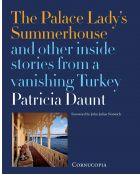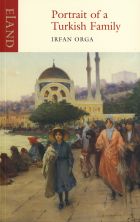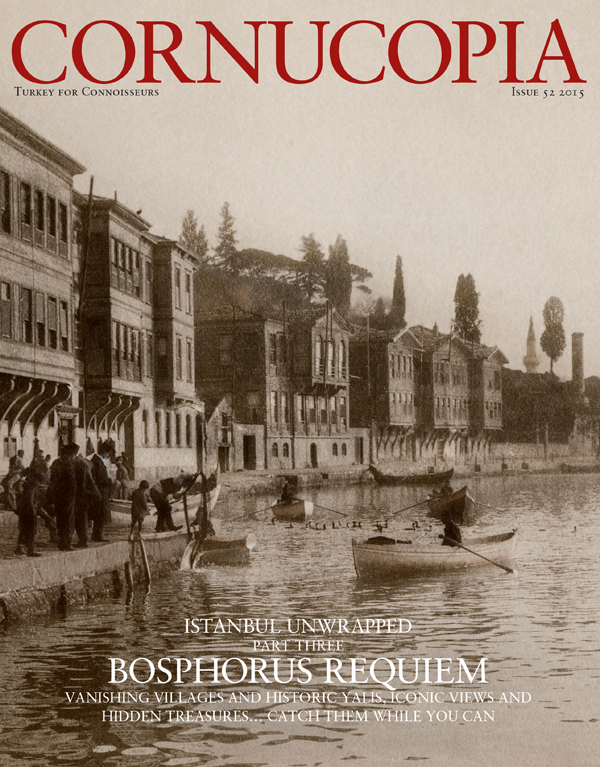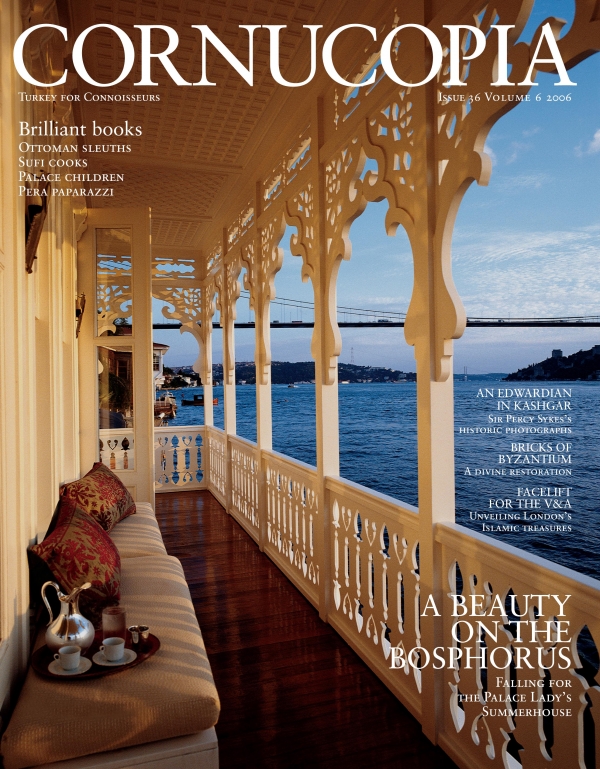Buy or gift a stand-alone digital subscription and get unlimited access to dozens of back issues for just £18.99 / $18.99 a year.
Please register at www.exacteditions.com/digital/cornucopia with your subscriber account number or contact subscriptions@cornucopia.net
Buy a digital subscription Go to the Digital EditionIt was only to stop a property dealer painting the selamlık blue that the Germen family acquired a Bosphorus yalı to look after. This pavilion, on a glorious stretch of the Anatolian shore, enjoys southerly views all the way to the Topkpapı and sunsets to die for. Patrica Daunt meets the latest owners of this former royal residence
My first view of the Germen family’s enchanting summerhouse in Vaniköy, on the Anatolian shore of the Bosphorus, was not from the sea but from the First Bosphorus Bridge. The house was built, probably in the 1840s, as a selamlık, a kind of pavilion which served the main Ottoman mansion next to it as a place where guests were received and men could retire. It stands boldly on the water, turned to catch the widest view of the Lower Bosphorus, its windows commanding a panorama stretching from Bebek to Üsküdar, via Seraglio Point. For some 60 years these two buildings have been separately owned, yet they are both structurally unaltered and still painted the distinctive Ottoman red.
The whole estate is said to have been acquired by the Palace sometime in the last decade of the 19th century as a summer residence for the blue-eyed, fair-haired Sultan Mehmet V Reshad. As heir apparent to his suspicious half-brother, Sultan Abdülhamid II, Mehmet Reshad, a timid, delicate poet and dervish, must have been living under strict supervision. Some authorities believe that the mansion was acquired for Mihrengiz, Mehmet Reshad’s third wife, who married into the imperial family in 1887 at the age of 18. On her husband’s death in 1918, it is thought that she disposed of the property to Evsabçıbaşı Sabit Efendi, Master of the Robes to the Sultan. Others suggest that it was acquired for the very much younger Dilfirid, Mehmet Reshad’s fifth wife, who was born in 1890.
Whichever of the wives was living there, the splendidly ornate sea door is some confirmation of the tradition of a royal connection, while the modest size of the selamlık indicates that Mehmet Reshad was an occasional visitor rather than a resident.
Some time during the late 1920s or early 1930s Sabit Efendi sold off the selamlık, which is now the Germen family’s yalı, to the politician and eminent professor Nihat Reşat Belger. Major refurbishment of the house was then put in hand.
Although it is protected from both the biting northerly winter winds and the currents racig round the point, it is fully exposed to the lodos, the sinister tropical storms which arise without warning from the south. Water crashing over the roof leaves salt biting into the woodwork and destabalising the pier. Professor Belger reduced this threat by extending the terrace overlooking the water.
Levnî and the Surnâme, by Esin Atıl, gives a spirited and vivid pictorial narration, from the brush of arguably the greatest of all Ottoman miniaturists, of the last great Ottoman festival. This was held in Istanbul in 1720, with all the splendour and magnificence for which the empire was famed. Christine Thomson reviews the Koçbank publication.
It was not until the sixteenth century when Catherine de’ Medici introduced spinach to France on her arrival from Florence as the bride of Henri II, that it was recognised as a food in its own right. Any dish with spinach is still ‘a la florentine’.
More cookery features
Said to be the world’s oldest continuously inhabited city, Damascus shows the traces of countless rulers, from the Arameans to the French. But it is the Ottomans whose influence is most clearly visible in the old city today. By Brigid Keenan. Photographs by Tim Beddow
Cornucopia was instrumental in reissuing a forgotten novel by Harold Nicolson, set in Istanbul. First published in 1921, Sweet Waters draws heavily on Nicolson’s experience as a diplomat in the city in the 1910s. It is also a highly autobiographical reworking of his courtship of Vita Sackville-West, as a new foreword by their son, Nigel Nicolson, reveals. By Aslı Aydıntaşbaş
These are the last great heathlands of Eastern Europe, one of the world’s rarest natural habitats. Unless they receive a last-minute reprieve, they will be bulldozed out of existence. Andrew Finkel reports on the dilemma facing the planners in Istanbul. Botanical notes by Andrew Byfield





Cornucopia works in partnership with the digital publishing platform Exact Editions to offer individual and institutional subscribers unlimited access to a searchable archive of fascinating back issues and every newly published issue. The digital edition of Cornucopia is available cross-platform on web, iOS and Android and offers a comprehensive search function, allowing the title’s cultural content to be delved into at the touch of a button.
Digital Subscription: £18.99 / $18.99 (1 year)
Subscribe now